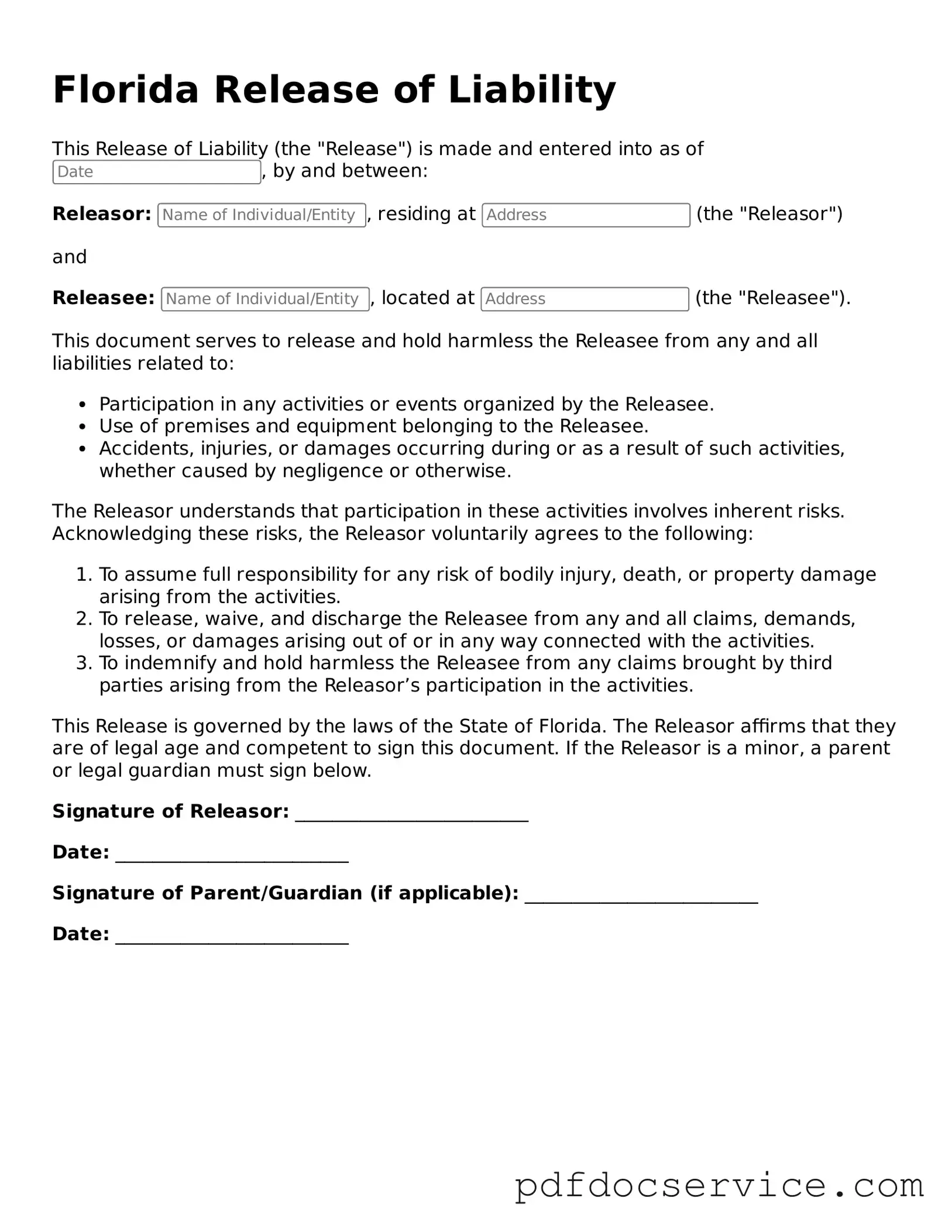A Florida Release of Liability form is a legal document that protects individuals and organizations from being held responsible for injuries or damages that may occur during an activity or event. By signing this form, participants acknowledge the risks involved and agree not to hold the organizers liable for any accidents or injuries that may happen.
This form is typically used in situations where there is a risk of injury. Common scenarios include:
-
Sports activities, such as skiing, rock climbing, or martial arts
-
Recreational events, like zip-lining or obstacle courses
-
Workshops or classes that involve physical activities
Using this form helps ensure that participants are aware of the risks and agree to take responsibility for their own safety.
Yes, a Release of Liability form can be enforceable in Florida, but certain conditions must be met. The form should be clear, specific, and voluntarily signed by the participant. It should not contain any ambiguous language. Additionally, the form cannot waive liability for gross negligence or intentional misconduct. Courts will typically uphold a well-drafted form that meets these criteria.
Yes, if a minor is participating in an activity that requires a Release of Liability form, a parent or legal guardian must sign on their behalf. This ensures that the minor’s interests are protected. It is important to ensure that the language in the form is clear and understandable for both the minor and the parent or guardian.
While it is possible to modify a Release of Liability form, it is crucial to ensure that any changes do not alter its legal effectiveness. Modifications should be made carefully, and it is often advisable to consult with a legal professional. This ensures that the form remains compliant with Florida law and adequately protects the interests of all parties involved.
If you choose not to use a Release of Liability form, you may expose yourself or your organization to potential legal claims. Without this form, participants can hold you liable for any injuries or damages that occur during the activity. This can lead to costly legal battles and financial liabilities. Using the form is a proactive step to help manage risks associated with your activities.
